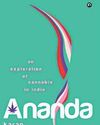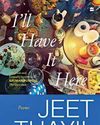
THE FIRST PERSON to solve a Rubik’s Cube spent a month struggling to unscramble it. It was the puzzle’s creator, an unassuming Hungarian architecture professor named ErnőRubik. When he invented the cube in 1974, he wasn’t sure it could be solved. Mathematicians later calculated that there are 43,252,003,274,489,856,000 ways to arrange the squares.
When Rubik finally did it, he was overcome by “a great sense of accomplishment and utter relief.” Looking back, he realizes the new generation of ‘speed-cubers’—Yusheng Du of China set the world record of 3.47 seconds in 2018—might not be impressed.
“But, remember,” Rubik writes in his 2020 memoir, Cubed, “this had never been done before.”
In the nearly five decades since, the Rubik’s Cube has become one of the most enduring, beguiling, maddening, and absorbing puzzles ever created. More than 350 million cubes have sold globally; if you include cheap copies, the number is far higher. They captivate computer programmers, philosophers, and artists. Hundreds of books, promising speed-solving strategies, analyzing cube design principles or exploring their philosophical significance, have been published.
Cognitive scientist Douglas Hofstadter wrote in 1981 that the cube "is an ingenious mechanical invention, a pastime, a learning tool, a source of metaphors, an inspiration."
But even as the Rubik’s Cube conquered the world, the publicity-averse man behind it has remained a mystery.
Esta historia es de la edición July 2022 de Reader's Digest India.
Comience su prueba gratuita de Magzter GOLD de 7 días para acceder a miles de historias premium seleccionadas y a más de 9,000 revistas y periódicos.
Ya eres suscriptor ? Conectar
Esta historia es de la edición July 2022 de Reader's Digest India.
Comience su prueba gratuita de Magzter GOLD de 7 días para acceder a miles de historias premium seleccionadas y a más de 9,000 revistas y periódicos.
Ya eres suscriptor? Conectar

ME & MY SHELF
Siddharth Kapila is a lawyer turned writer whose writing has focussed on issues surrounding Hinduism. His debut book, Tripping Down the Ganga: A Son's Exploration of Faith (Speaking Tiger) traces his seven-year-long journey along India's holiest river and his explorations into the nature of faith among believers and skeptics alike.

EMBEDDED FROM NPR
For all its flaws and shortcomings, some of which have come under the spotlight in recent years, NPR makes some of the best hardcore journalistic podcasts ever.

ANURAG MINUS VERMA PODCAST
Interview podcasts live and die not just on the strengths of the interviewer but also the range of participating guests.

WE'RE NOT KIDDING WITH MEHDI & FRIENDS
Since his exit from MSNBC, star anchor and journalist Mehdi Hasan has gone on to found Zeteo, an all-new media startup focussing on both news and analysis.

Ananda: An Exploration of Cannabis in India by Karan Madhok (Aleph)
Karan Madhok's Ananda is a lively, three-dimensional exploration of India's past and present relationship with cannabis.

I'll Have it Here: Poems by Jeet Thayil, (Fourth Estate)
For over three decades now, Jeet Thayil has been one of India's pre-eminent Englishlanguage poets.

Orbital by Samantha Harvey (Penguin Random House India)
Samantha Harvey became the latest winner of the Booker Prize last month for Orbital, a short, sharp shock of a novel about a group of astronauts aboard the International Space Station for a long-term mission.

She Defied All the Odds
When doctors told the McCoombes that spina bifida would severely limit their daughter's life, they refused to listen. So did the little girl

DO YOU DARE?
Two Danish businesswomen want us to start eating insects. It's good for the environment, but can consumers get over the yuck factor?

Searching for Santa Claus
Santa lives at the North Pole, right? Don't say that to the people of Rovaniemi in northern Finland